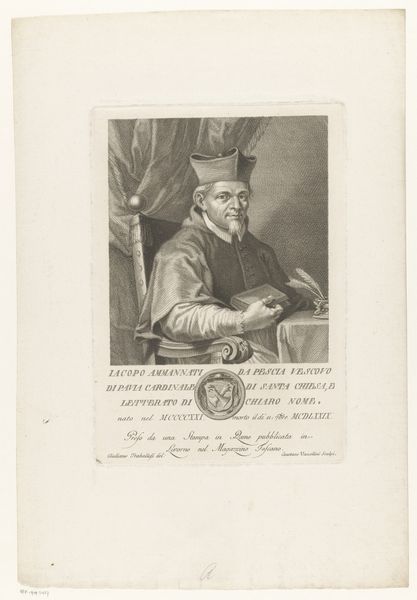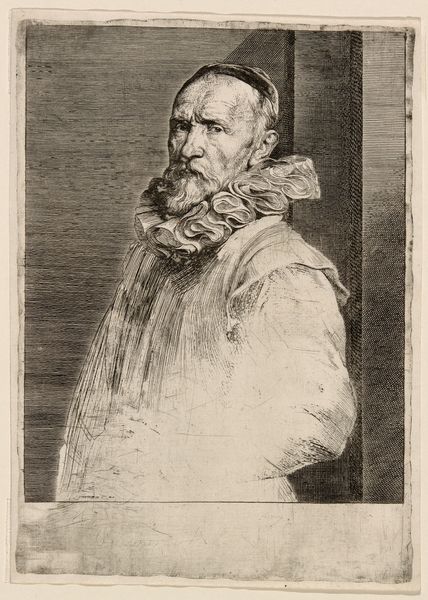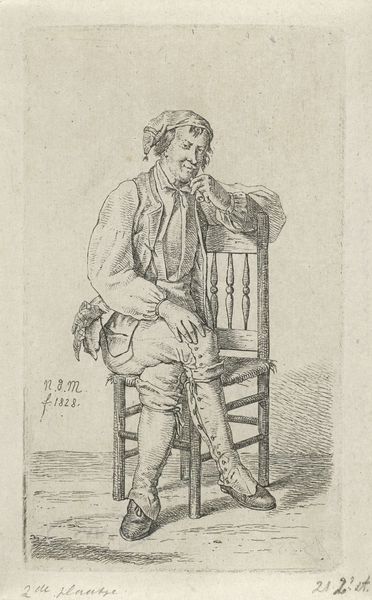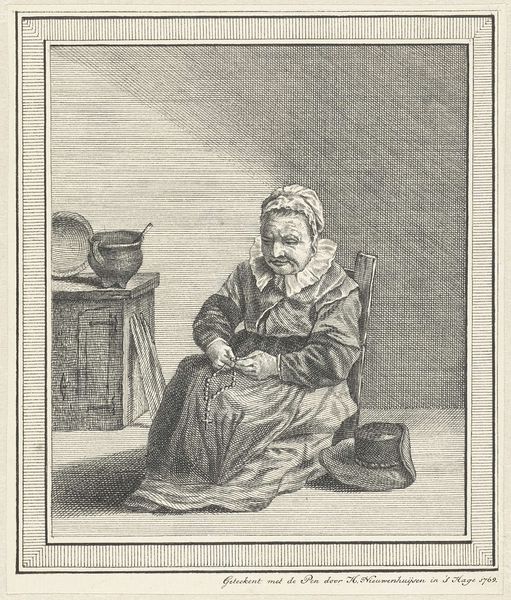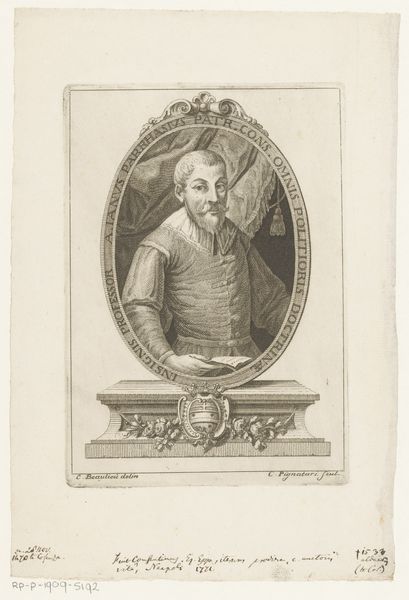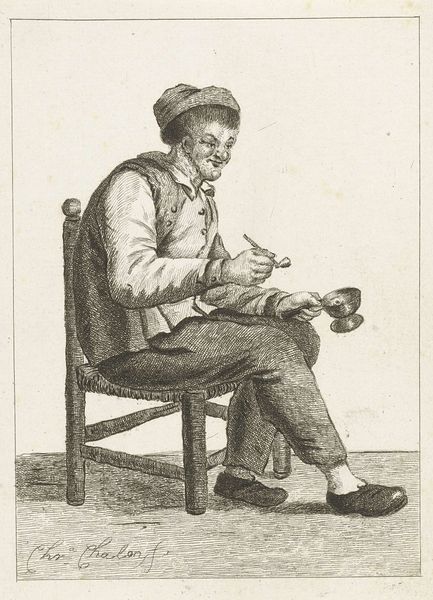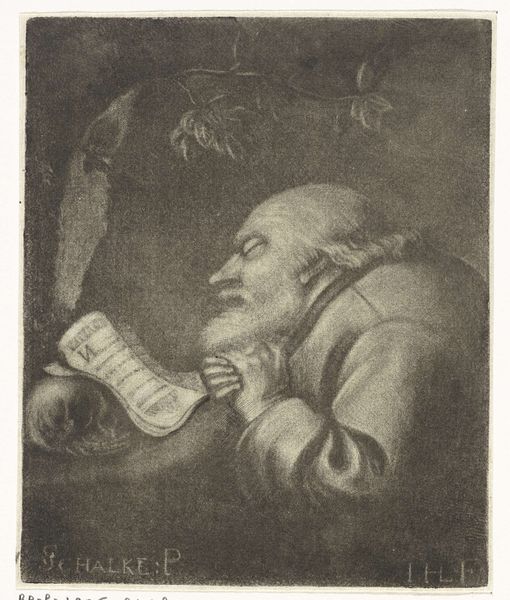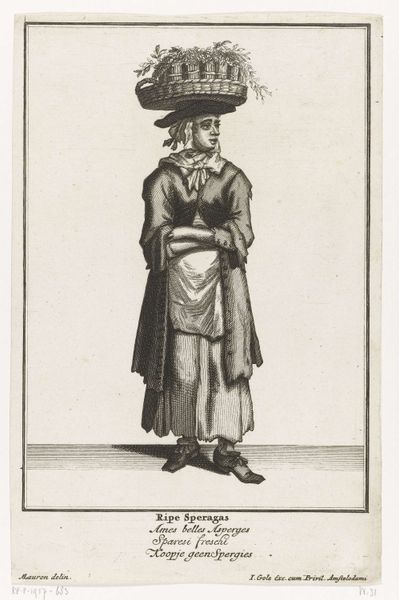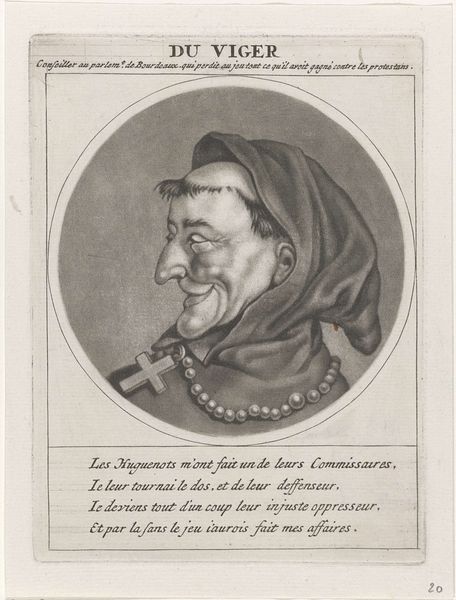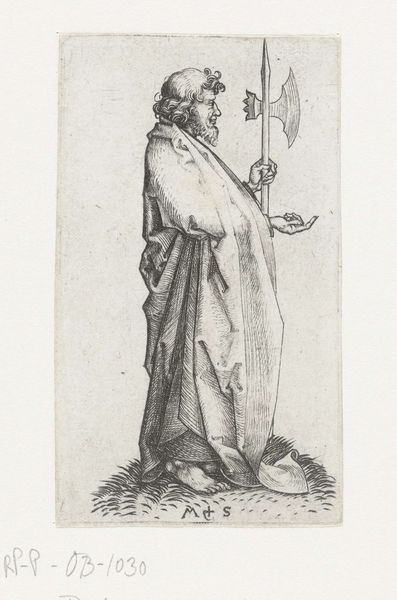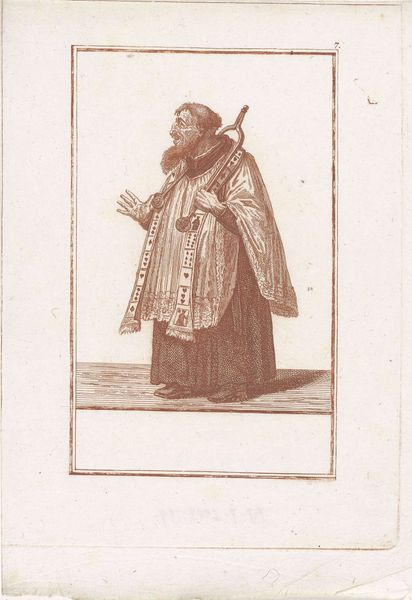
Dimensions: height 164 mm, width 141 mm
Copyright: Rijks Museum: Open Domain
Curator: "Zittende man met één been," or "Seated Man with One Leg," created by Hendrik Nieuwenhuysen in 1769. The medium used was engraving. Editor: My first impression is weariness. The figure seems slumped, burdened—almost as though the very act of sitting is an exertion. Curator: Well, engravings during that era often served to reflect or critique social issues, and I feel this piece participates in a discourse around disability, ageing and social exclusion. Nieuwenhuysen's piece seems to humanise the realities of life. Consider the posture, the details etched to illustrate age and a missing limb. It presents disability, normally obscured or 'corrected', front and centre. Editor: From a purely formal perspective, I find the use of line fascinating here. Look how the varying densities create areas of shadow and light, almost independent from the sitter, emphasizing particular forms. See, for example, how the single extended leg is foregrounded by its proximity and weight, counterbalancing the darkness enveloping the subject's features, drawing the viewer to read that imbalance immediately. Curator: Precisely! This positioning isn't accidental, I don't think. There’s a clear social dynamic being brought to light here; Nieuwenhuysen seems to want the viewer to confront what society often chooses to ignore or diminish—drawing connections to themes of access, dignity and visibility in today's world. The missing limb could become an invitation to discuss society's responsibilities towards its members. Editor: While your intersectional approach illuminates a necessary and modern reading, I would add that the subject's quiet acceptance contributes to an arresting image that highlights not what has been lost, but rather that which remains. I mean, think about the fact that this figure seems comfortable enough with its appearance as to have themselves depicted like that. A powerful subversion if you ask me. Curator: I agree! Overall, considering the historical context of its creation, alongside both his posture and compositional design choices allows us to find areas of productive engagement across history, representation and self-determination. Editor: I’d have to say that a work of this quality, although produced long ago, retains the formal qualities necessary to provoke emotional reactions even to this day.
Comments
No comments
Be the first to comment and join the conversation on the ultimate creative platform.
